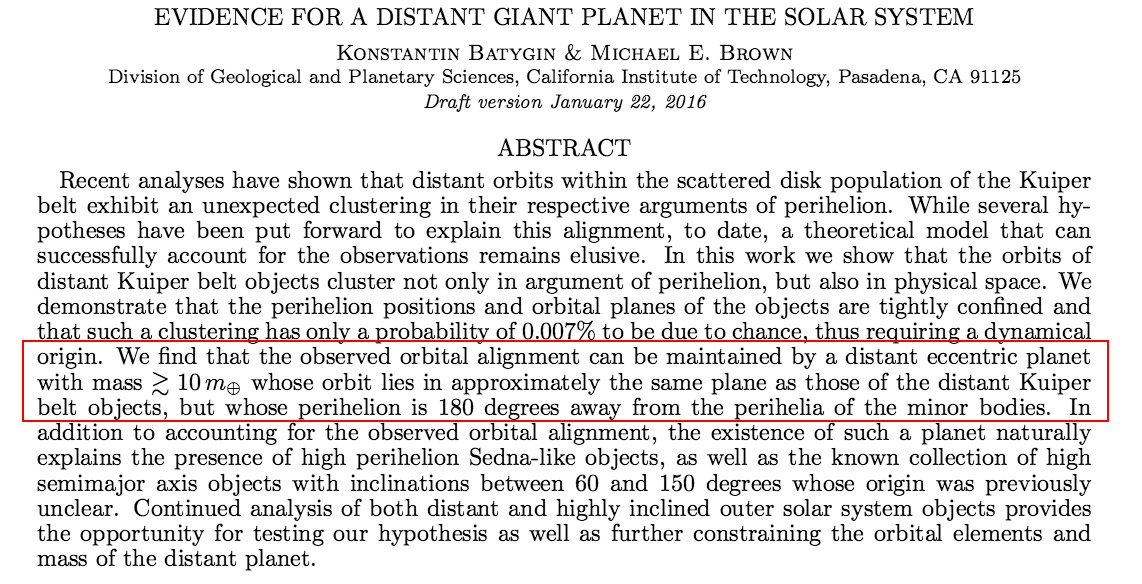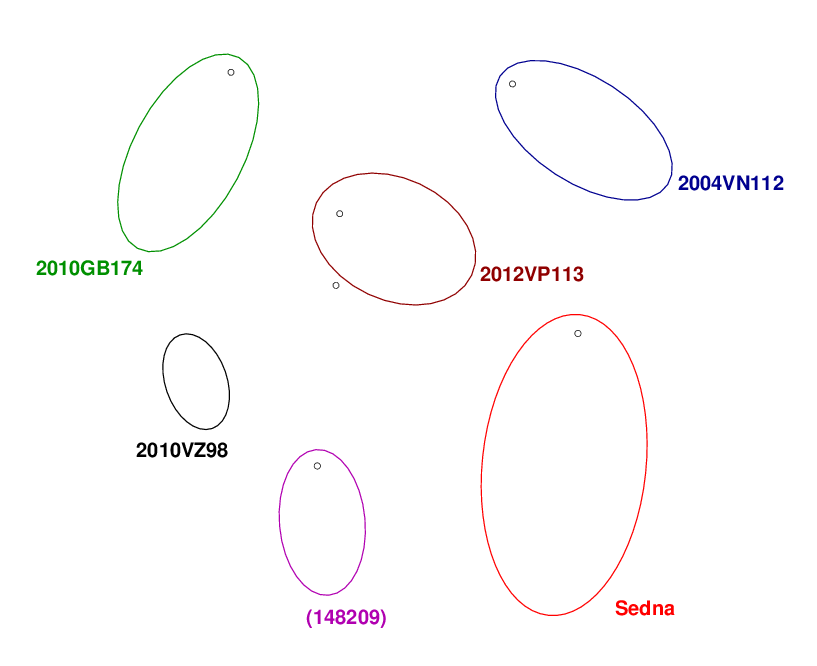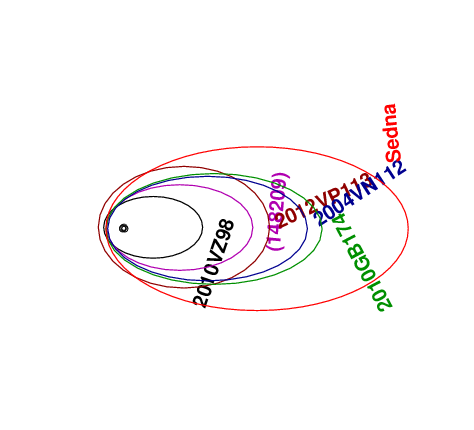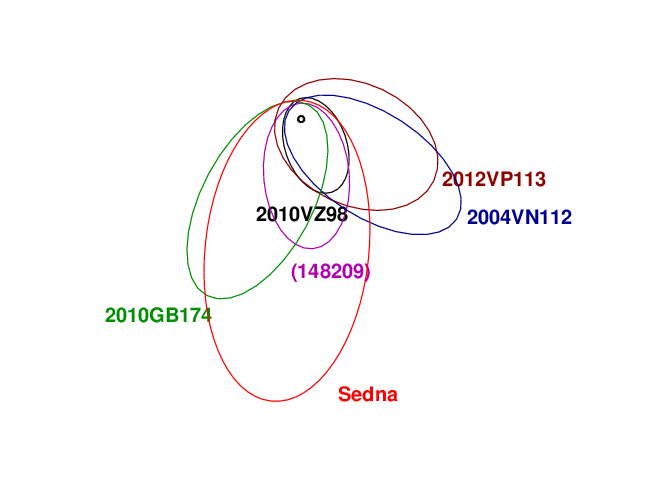
Title page of Batygin and Brown, AJ 151, 22 (2016)
 Copyright © Michael Richmond.
This work is licensed under a Creative Commons License.
Copyright © Michael Richmond.
This work is licensed under a Creative Commons License.
You've heard the news:
Here's the paper that started it all:

Title page of
Batygin and Brown, AJ 151, 22 (2016)
But -- the authors have not actually found a new planet. In fact, there are no observations of the planet itself at all. This is a hypothetical planet.
Why would anyone believe that such an object might exist?
Well, back in the 1830s and 1840s, some old-timey astronomers made a similar claim. They studied the planet Uranus, which had been discovered just 50 years earlier. When they applied Newton's Laws of Universal Gravitation to this new planet, adding together the forces on it due to the Sun and all the traditional planets, they noticed that things didn't quite add up: Uranus moved a little slower than it should have at some times, and faster than it should have at others.
Two scientists, Urbain Le Verrier in France and John Couch Adams in England, independently calculated that IF a massive planet just happened to revolve around the Sun outside the orbit of Uranus, at just the right location, it could explain those little extra motions.
And they were right! In 1846, German astronomers found a new planet, Neptune, almost exactly where both Le Verrier and Adams had predicted it to be.
The lesson here is
If an object(s) has a peculiar orbit, maybe some invisible body is nudging it.
So, back to the current day. Over the past decade, astronomers have slowly found and catalogued a few VERY distant objects in our Solar System.
There are plenty of objects which are sort of far away -- like, as distant as Pluto, for example -- but such ordinary Kuiper Belt objects are subject to the strong gravitational pulls of the giant planets Jupiter, Saturn, Uranus and Neptune. In order for a body's orbit to remain stable over billions of years, it needs to stay really far away from these trouble-makers.
How far is really far away?
REALLY HONKING FAR AWAY
Let me explain. Let's make a model of the solar system:
Q: How far away is Saturn? A: In Buffalo, about 90 km away.
Q: How close can object be and still qualify as
REALLY far away?
A: No closer than
MINNEAPOLIS or ATLANTA or ST. LOUIS
and maybe as far away as
BOGOTA, COLUMBIA or REYKJAVIK, ICELAND
In astronomy terms, that means at least 150 AU from the Sun, and perhaps as much as 400 to 600 AU.
But astronomers have discovered a few objects at these ginormous distances. Here's a schematic picture of their orbits. The little black circle represents the orbit of Saturn.

Now, the important thing that Batygin and Brown noticed is that these six objects in particular -- which have orbits that ought to remain stable over long periods -- have orbits which are curiously aligned.
Like this?

No, silly! When a SCIENTIST uses the word "aligned", he doesn't mean "lined up nicely". No, to a scientist, the word aligned means "kinda sorta not exactly random, maybe."

See? Those orbits are kinda sorta all on one side of the Sun, right? In fact, the long axes of the orbits all fit into a single 90 degree right angle , just one quarter of the way around the Sun.
Ah, that's where YOU all come into the story.
In their paper, Batygin and Brown estimate that IF there is a massive body in the outer Solar System which is responsible for sheparding those six objects into such a tight alignment, then it ought to be located .... somewhere over there.
In that general direction.
Over in that region of the sky.
Somewhere in a region of about 5000 square degrees.
Looking for a very faint object in a very large area is hard. Only the biggest telescopes on Earth have a chance to detect the object ... and most of them have cameras which cover only a tiny field of view.
The best tool for the job is Hyper Suprime Cam on the Subaru Telescope. It covers a big region of the sky -- larger than the Full Moon -- and it can detect very faint objects.
Even so,
When I go through the exercise of estimating how long it make take to cover the suspected region, I end up with a guess of
THREE TO FIVE YEARS.
So, don't hold your breath.
*P.S. Oh, yeah, the alignment of those outer orbits might just be chance, and Planet Nine might not actually exist.
 Copyright © Michael Richmond.
This work is licensed under a Creative Commons License.
Copyright © Michael Richmond.
This work is licensed under a Creative Commons License.